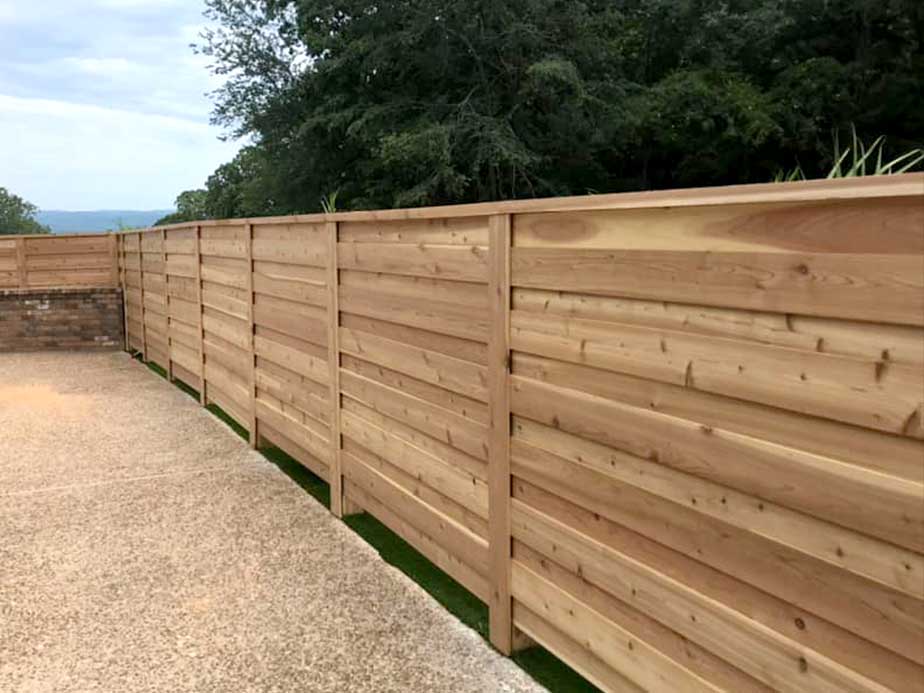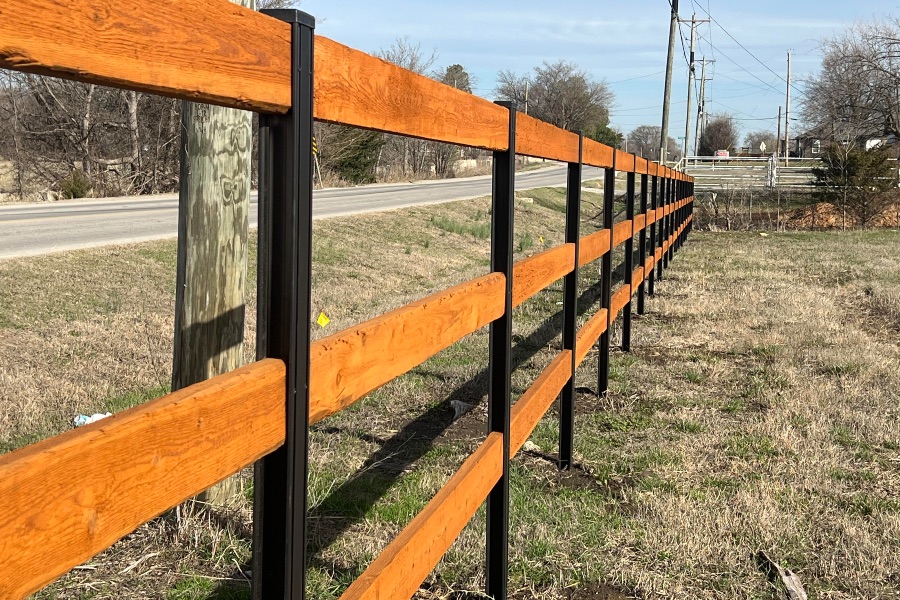All Categories
Featured

As sustainability comes to be an expanding top priority for property owners and services, the demand for environmentally friendly building products encompasses outdoor spaces, consisting of fences. Standard secure fencing materials such as metal, wood, and vinyl can have significant environmental impacts, from logging to chemical treatments and plastic waste. However, there are several eco-friendly fence options readily available that not just reduce the carbon footprint yet likewise supply toughness and aesthetic allure. Allow's explore several of the most popular and lasting fence materials that can aid you go green while still enhancing your residential or commercial property's privacy, safety and security, and style.
- Bamboo Secure fencing. Bamboo is one of the most sustainable products on the market, and it is increasingly used in fencing construction as a result of its fast development and stamina. Unlike hardwood trees, bamboo is a yard that can grow back totally within just a couple of years, making it extremely renewable. It's normally resistant to parasites and rot, which indicates it doesn't need severe chemicals or treatments, making it a green selection.

Advantages: Bamboo fences are durable, low-maintenance, and eco-friendly. They are naturally resistant to termites and dampness, minimizing the demand for chemical preservatives. Additionally, bamboo helps lower soil disintegration as a result of its deep origin systems. Factors to consider: Bamboo can be a lot more costly than some typical wood fencing alternatives, and it might not appropriate for locations with extreme chilly or freezing temperature levels, as it can become breakable over time. 2. Recycled Materials Fencing. Fence made from recycled materials is a fantastic means to advertise sustainability. Lots of producers now supply fences made from post-consumer plastic, recycled timber, or even repurposed steel. By picking fencing made from recycled products, you lower the demand for new sources and aid stop waste from winding up in landfills. Many composite products, for instance, are made from recycled plastic containers, wood scraps, and other products that would certainly otherwise be disposed of.
Advantages: Recycled product fencings aid conserve all-natural sources, lower air pollution, and lower the environmental effect of the manufacturing process. They can also provide impressive toughness, standing up to degeneration, mold and mildew, and termites. Considerations: While recycled material fences are extremely long lasting and green, they might not have the same all-natural visual that some house owners look for. However, producers currently use designs that resemble the appearance of timber or rock. 3. Composite Fence. Compound secure fencing is made from a blend of timber fibers and plastic, usually integrating recycled products. This mix produces an extremely long lasting, low-maintenance fencing that does not call for routine painting or discoloration, making it a sustainable option. Composite fencings are resistant to rot, insects, and weathering, which suggests they can last for several years without the requirement for frequent substitutes.

Advantages: Composite fences are durable and can stand up to severe climate condition, decreasing the need for replacements or repair work. Because composite materials typically include recycled material, they aid minimize plastic waste. Additionally, they do not need damaging chemicals or therapies. Factors to consider: Composite fencings can have a greater ahead of time cost than conventional wood or vinyl, though their durability and reduced maintenance prices typically make them a more cost-effective choice in the lengthy run. 4. Living Fencings. Living fencings, also understood as hedgerows, are an environmentally friendly and aesthetically pleasing option that includes planting dense bushes, trees, or climbing plants along your residential or commercial property line to create an all-natural barrier. Popular plants for living fencings include boxwood, privet, and holly. These plants can be grown to supply privacy, windbreaks, and noise reduction while adding to ecological health and wellness.
Conveniences: Living fences promote biodiversity, boost air top quality, and absorb carbon dioxide, making them one of one of the most environmentally friendly fence options. They likewise provide a natural environment for pests and birds and can reduce sound pollution and help regulate temperature levels in your backyard. Considerations: Living fencings require routine upkeep, such as cutting, watering, and in some cases pest control. They additionally take some time to develop and may not give prompt personal privacy contrasted to strong timber or plastic fencings. 5. Cedar and Redwood Secure Fencing. Cedar and redwood are popular natural timber alternatives for fences. These materials are naturally resistant and resilient to rot, bugs, and wetness, which suggests they generally do not need the use of harmful chemical therapies. When sourced from sustainably taken care of woodlands, cedar and redwood fencings can be an ecologically friendly selection that offers both appeal and long life.
Benefits: These timbers are biodegradable, renewable, and deal excellent sturdiness and natural appeal. Cedar and redwood likewise have a lower ecological impact when collected responsibly, making them an eco-friendly selection for several home owners. Factors to consider: While cedar and redwood fences have environmental benefits, they do still require occasional maintenance and are more expensive than various other wood options. It is essential to guarantee that the timber is sourced from sustainable woodlands to maximize its ecological advantages. 6. Rock and Brick Secure Fencing (Recovered) Rock and brick fences are incredibly durable and low-maintenance, and they can be environment-friendly when made from recovered products. Redeemed rock and block are frequently recovered from old structures or construction jobs, reducing waste and preserving natural deposits. These materials use an ageless appearance and are very immune to weathering, making them a durable option for fence.
Advantages: Reclaimed rock and block are durable, cosmetically pleasing, and require minimal upkeep. By repurposing these materials, you help in reducing the demand for brand-new sources and reduce waste in garbage dumps. Factors to consider: The setup of rock and block fences can be labor-intensive and more costly compared to other materials, however their durability and low maintenance requirements can make them cost-efficient in the future. Conclusion. Environmentally friendly fencing options are not only great for the atmosphere however likewise provide longevity, low upkeep, and aesthetic appeal. Whether you choose bamboo, recycled materials, composite fencing, living fencings, or sustainable wood like cedar and redwood, there are numerous methods to reduce your ecological footprint while enhancing your residential property's appearance. By selecting these eco-conscious products, you can add to a healthier world and produce an exterior room that reflects your values.
Latest Posts
Easy Coin Conversion with Coinstar and WyHy Federal Cooperative Credit Union
Published Apr 19, 25
1 min read
Unlock Your Dream Fence with Flexible Financing Options
Published Apr 18, 25
0 min read
Discover the Essence of Coastal Dining
Published Apr 18, 25
1 min read